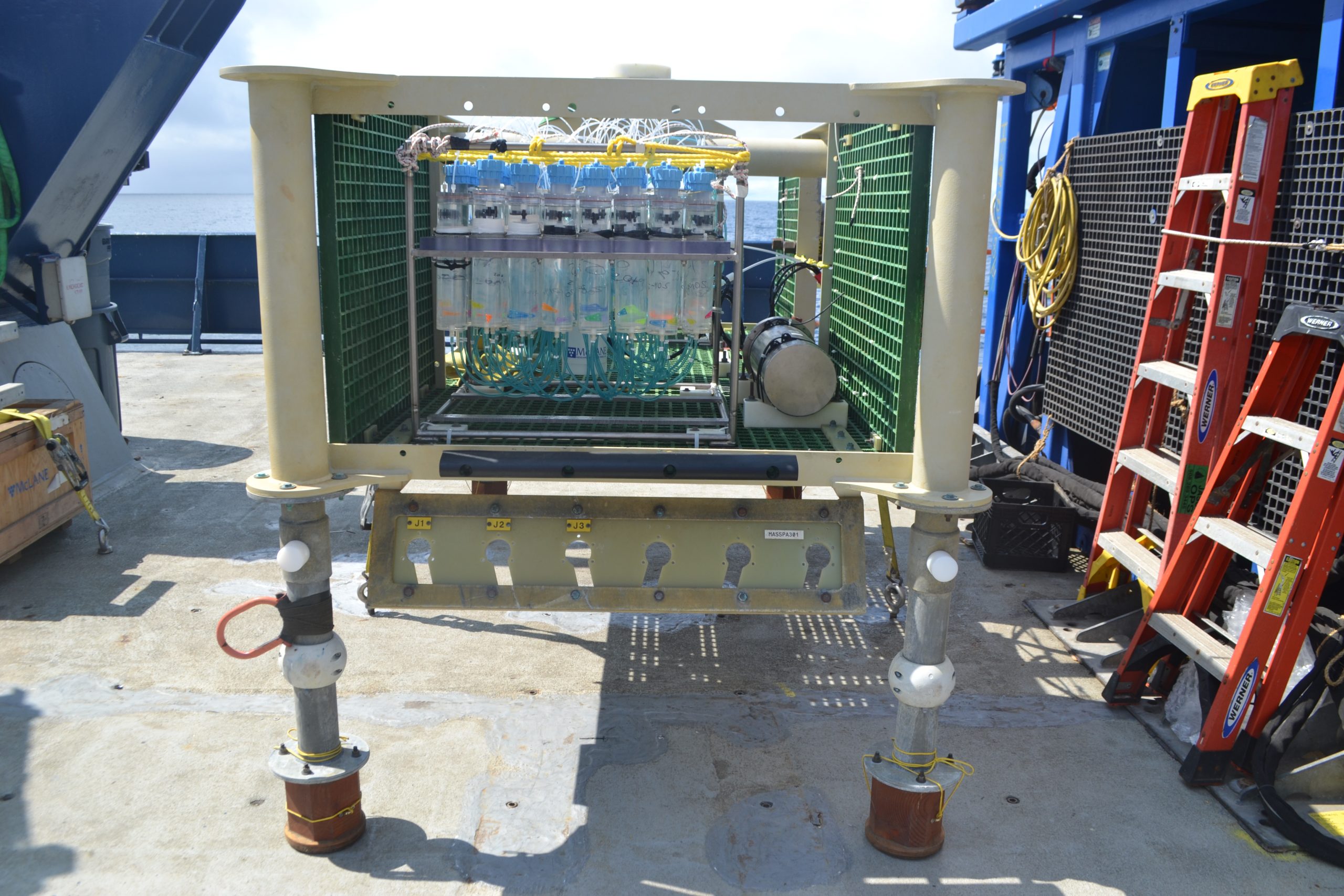Understanding the linkages among microbes that thrive beneath the seafloor and in vent fluids associated with active submarine volcanoes is one of the most profound areas of marine research. New discoveries in this area require in situ measurements of fluid chemistry and temperature, and the ability to take co-registered filtered samples of microbial DNA for eventual shore-based analyses that allow identification of the organisms and information about their novel metabolisms.
The RAS (Remote Access Sampler) allows time-series temperature measurement in real-time and in situ sampling of hydrothermal vent fluids, while the PPS (Particulate DNA Sampler) allows collection, filtering, and preservation of microbial DNA. Originally the instrument took the form of a coupled mooring system, developed by D. Butterfield at NOAA-PMEL, which was installed from 2014-2017 in the International District Hydrothermal Vent Field at the El Gordo diffuse flow site in the International District Hydrothermal Field in Axial Caldera.

In 2019, a digital-still camera (front-center) and a fluid- and microbial-DNA sampler RASFLA/PPSDNA, inside a seafloor-frame (back-center), were installed in the International District Hydrothermal Field. A titanium vent cap or “hat” (center-middle) rests on top of a hydrothermal-vent structure covered with microbes. Inside the “hat” are temperature probes and intake nozzles for the fluid and DNA sampler.
Photo Credit: UW; NSF-OOI; CSSF; DiveJ2-1190; V19
In 2017, the RAS and microbial sampler were placed in a junction box frame, along with the mass spectrometer, and installed at the Tiny Village site. The intake line to the instruments is placed inside a “vent cap” along with an intake for the mass spectrometer to obtain co-registered temperature, volatile vent fluid chemistry, and microbial DNA analyses at this site. Controlled from shore, or by a mission plan, a pump sucks in hydrothermal fluid into sterile bags (and also onto filters for collection of DNA in a similar system above the RAS). A nearby digital still camera provides an overview of the vent and documentation of changes in vent deposit evolution and macrofaunal communities over time. Because the instrument is cabled, which allows two-way communication and power, the sample bottles can be triggered from shore in response to volcanic or tectonic events, or set to trigger at specified intervals.
During annual Cabled Array maintenance cruises, this instrument is recovered and collected material analyzed to provide chemical characterization of the hydrothermal fluid samples. The OOI Core Instrument Analytical Results data repository contains processed analytical data and metadata for a subset of Cabled Array instruments that collect fluid or particulate samples that are brought back to shore and analyzed in a laboratory. Numerical and other processed analytical results are generally provided in spreadsheet form. Associated metadata files including analytical protocols, sampling and recovery notes, and sample log files are presented in .pdf format. As-deployed images of instruments are provided in .jpg format, with image metadata summarized in spreadsheet-based catalogs.
The RASFL analytical results can be found here: International District Vent Field RASFL Data

Pre-deployment deck photo of fluid- and microbial-DNA samplers RASFLA/PPSDNA, inside a seafloor-frame, focused on the fluid sampler portion of the instrument. Photo Credit: M. Elend; University of Washington; V19

